Recombinant Human CD244 protein(Met1-Arg221), hFc-tagged
| Cat.No. : | CD244-580H |
| Product Overview : | Recombinant Human 2B4 / CD244 (NP_057466.1)(Met 1-Arg221) was expressed in HEK293 with the C-terminal fused Fc region of Human IgG1. |
| Availability | April 17, 2025 |
| Unit | |
| Price | |
| Qty |
- Specification
- Gene Information
- Related Products
- Case Study
- Application
- Download
| Species : | Human |
| Source : | HEK293 |
| Tag : | Fc |
| Protein Length : | Met1-Arg221 |
| Form : | Lyophilized from sterile PBS, pH 7.4. Normally 5 % - 8 % trehalose, mannitol and 0.01% Tween80 are added as protectants before lyophilization. |
| Bio-activity : | Measured by its binding ability in a functional ELISA. Immobilized human CD48 at 10 μg/ml (100 μl/well) can bind recombinant human 2B4 / CD244 with a linear range of 0.004-0.4 μg/ml |
| Molecular Mass : | The recombinant 2B4/CD244/Fc chimera is a disulfide-linked homodimer. The reduced monomer comprises 438 amino acids and predicts a molecular mass of 49 kDa. As a result of glycosylation, the rh2B4/CD244/Fc monomer migrates as an approximately 70-80 kDa band in SDS-PAGE under reducing conditions. |
| Endotoxin : | < 1.0 EU per μg of the protein as determined by the LAL method |
| Purity : | > 97 % as determined by SDS-PAGE |
| Storage : | Samples are stable for up to twelve months from date of receipt at -20°C to -80°C. Store it under sterile conditions at -20°C to -80°C. It is recommended that the protein be aliquoted for optimal storage. Avoid repeated freeze-thaw cycles. |
| Reconstitution : | It is recommended that sterile water be added to the vial to prepare a stock solution of 0.2 ug/ul. Centrifuge the vial at 4°C before opening to recover the entire contents. |
| Gene Name | CD244 CD244 molecule, natural killer cell receptor 2B4 [ Homo sapiens ] |
| Official Symbol | CD244 |
| Synonyms | CD244; CD244 molecule, natural killer cell receptor 2B4; CD244 natural killer cell receptor 2B4 , natural killer cell receptor 2B4; natural killer cell receptor 2B4; 2B4; NAIL; NKR2B4; Nmrk; SLAMF4; h2B4; NK cell activation-inducing ligand; NK cell type I receptor protein 2B4; NK cell activation inducing ligand NAIL; |
| Gene ID | 51744 |
| mRNA Refseq | NM_001166663 |
| Protein Refseq | NP_001160135 |
| MIM | 605554 |
| UniProt ID | Q9BZW8 |
| ◆ Recombinant Proteins | ||
| CD244-517H | Recombinant Human CD244 Protein (Cys22-Ala221), C-hFc-tagged | +Inquiry |
| CD244-4512H | Recombinant Human CD244 Protein, Myc/DDK-tagged, C13 and N15-labeled | +Inquiry |
| CD244-6969H | Recombinant Human CD244 Molecule, Natural Killer Cell Receptor 2B4, His-tagged | +Inquiry |
| CD244-6754H | Recombinant Human CD244 protein, hFc-Myc-tagged | +Inquiry |
| CD244-2856H | Active Recombinant Human CD244 protein, mFc-tagged | +Inquiry |
| ◆ Cell & Tissue Lysates | ||
| CD244-2303HCL | Recombinant Human CD244 cell lysate | +Inquiry |
Case 1: Koide S, et al. iScience. 2021
Isolating long-term hematopoietic stem cells (HSCs) using flow cytometry and surface markers doesn't always reflect their true functionality after being cultured. In this study, cultured HSCs start expressing genes related to mast cells, including Cd244. Once cultured, HSCs split into CD244- and CD244+ groups, where only the CD244- ones, which express less mast cell markers and maintain HSC genes, kept their potential to regenerate. This was consistent even when using a special growth medium with polyvinyl alcohol. Inducing ER stress resulted in more CD244+ cells, while reducing stress with TUDCA decreased CD244+ numbers and improved regeneration. This suggests CD244 can serve as a marker to filter out non-functional HSCs after culture, helping us understand how their functionality declines during treatment.
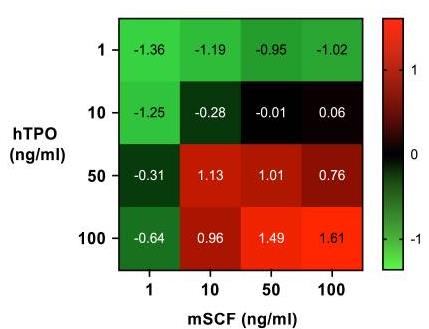
Fig1. A heatmap showing frequencies of CD244-CD48-KSL cells after 7 days’ culture with various SCF/TPO concentrations.
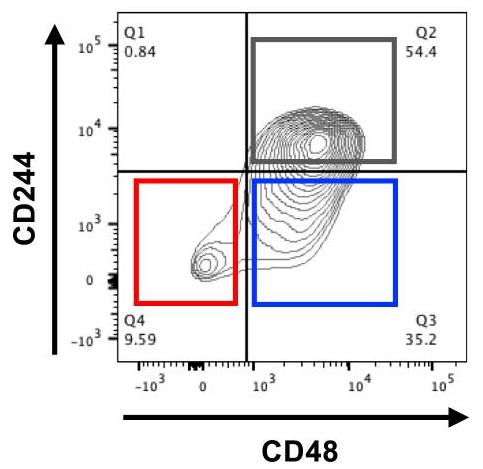
Fig2. Expression patterns of CD244 and CD48 on the cell surface of KSL cells after in vitro culture in PVA medium.
Case 2: Enose-Akahata Y, et al. PLoS Pathog. 2009
HTLV-I-specific CD8(+) T cells, abundant in blood and cerebrospinal fluid, drive inflammation in HTLV-I-related nerve diseases like HAM/TSP. While these cells are active in both asymptomatic carriers and affected patients, CD244 levels are higher in those infected than in healthy people. Blocking CD244 reduces inflammation signals in patients, linking it to T cell activity. Additionally, the protein SAP is more present in patients, correlating with viral loads, and its reduction lowers inflammation signals. The CD244/SAP pathway is thus crucial in T cell regulation and contributes to inflammatory nerve diseases.
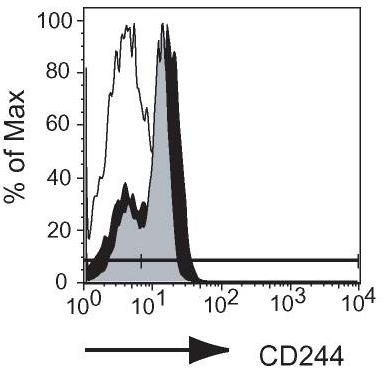
Fig1. Representative histograms of CD244 expression on CD8+ T cells of a ND, an AC and a patient with HAM/TSP.
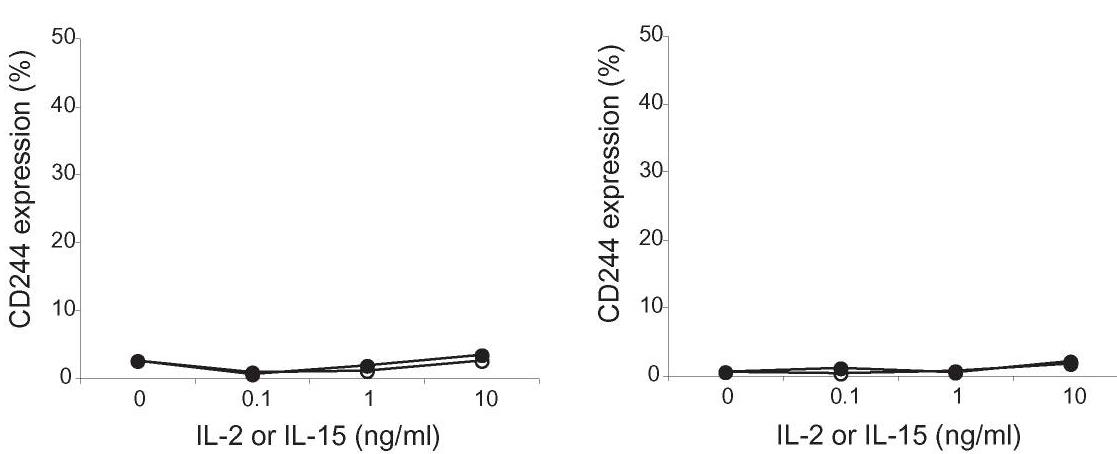
Fig2. CD244 expressions in CD8+ T cells isolated from ND PBMCs were compared after the culture with rhIL-2 (opened circle) or rhIL-15.
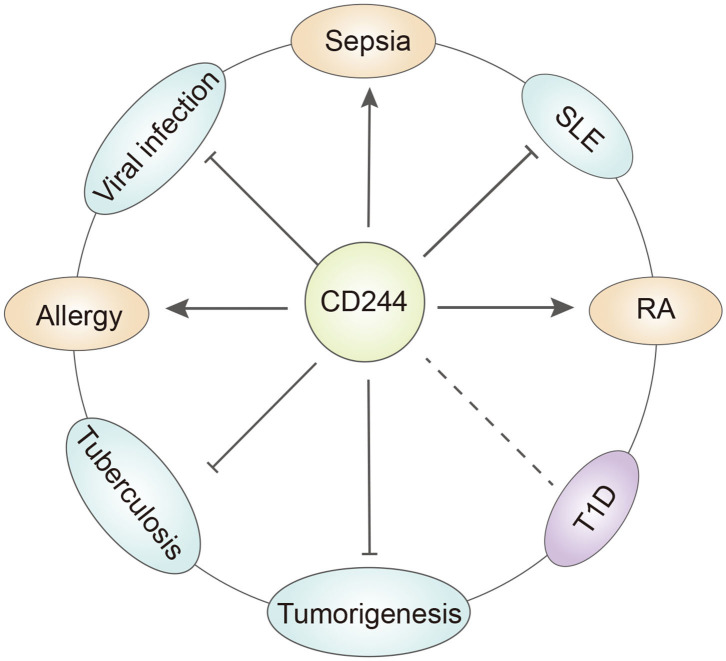
Fig1. The role of CD244 in different diseases. (Lin Sun, 2021)
Not For Human Consumption!
Inquiry
- Reviews
- Q&As
Ask a Question for All CD244 Products
Required fields are marked with *
My Review for All CD244 Products
Required fields are marked with *
Inquiry Basket


